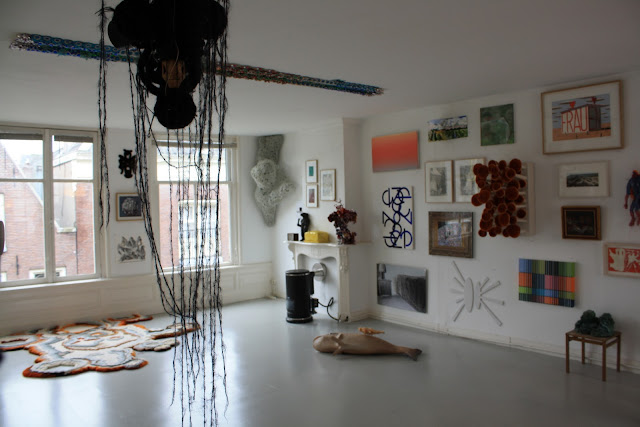 |
| Text proposal made of nails |
'A site specific exhibit' is what you told us 8 weeks ago. So we formed groups to challenge ourselves and exchange form and content. What is the history of this location and how do we move around in it? We started a process and were cut short. No big deal. We took on the NEW grid and started again. New New New; it's New York. Concrete jungle where dreams are made of. And 'new' is what everybody seems in need of to show. For me it became apparent that this site specific exhibit is much bigger than a location. It is a 'gut' feeling that is a stranger to me. As if all energy is way up at the ceiling and not at the ground. Nothing can be extracted from the earth here. This place is barren. And I hang between a passive aggressive state, conflicting 'wanna makes' with 'thesis writing'. The time is getting closer to the exhibit and I have found my armory. I'll bring 2 large Nanika drawings to this event. Heavy framed in wood they are kept in place by four pins, this avoids the work from touching the glass. The participation of these works can be seen as an attempt to open up my presence at the KB studio. They have an emotionally charged depiction and I hope their presence at the studio will alter the energy there. In return I hope the studio will add a layer of experiment to their finished state of being. Nanika is Japanese for 'something that is hard to describe' and thus it finds its way to my own experience at the location and could conflict, add and confront building and viewers. I'm angry and I'm happy that the first cracks appear on the concrete floor.
 |
| Nanika 13 charcoal, marker, acrylic paint on paper 114cm x 166cm |

















